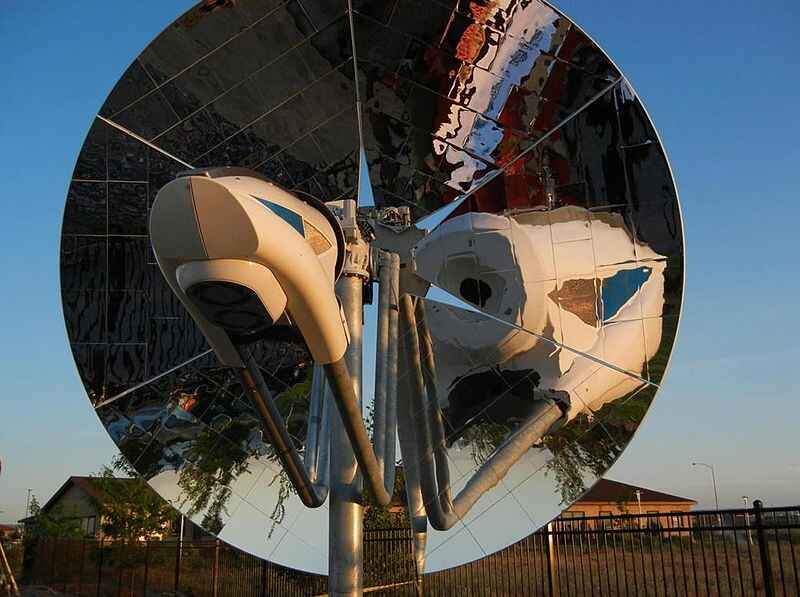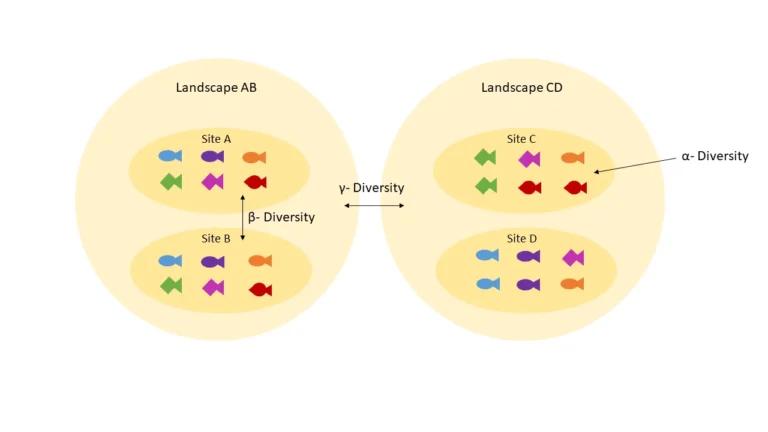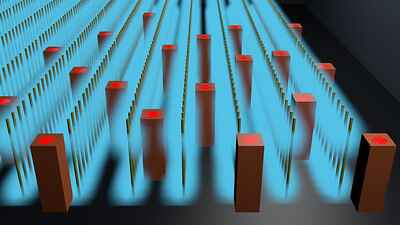Active Solar Energy Definition, Working Principle and Types
Active solar energy is a term which describes solar energy that is collected and transferred to a working fluid which conveys and converts it for use. This article discusses active solar energy definition, working principle, and types, as outlined below;
-Active Solar Energy Definition: 6 Ways to Define Active Solar Energy
-How Active Solar Energy Works
-Types of Active Solar Energy Systems
Active Solar Energy Definition: 6 Ways to Define Active Solar Energy
Active solar energy refers to renewable energy from the Sun, that is being transferred and/or converted from one medium or form to another, using mechanical or electrical systems, in a manner that optimizes productivity while minimizing environmental impacts [5].
The above is a most basic active solar energy definition in environmental science context. It describes the 'active' nature of this form of solar energy by referring to active solar systems and how they are used for energy transfer and conversion of electromagnetic waves from the Sun.
Below is an alternative active solar energy definition, which mentions some workable examples of active solar systems, to provide further clarity to the concept and its understanding;
Active solar energy is the term used to describe energy from the Sun when it is collected and harnessed using mechanical and electrical systems like; pumped-solar air heating system, concentrated solar power plant/system, solar water heater, fluid-based solar radiator, hybrid solar cogeneration system with panels.
When discussing active solar energy, it is usually helpful to make reference to the contrast with passive solar, in order for this contrast to be used for better understanding of what active solar revolves around.
In the alternative active solar energy definition below, reference is made to active vs passive solar on a comparative basis;
Active solar energy is solar energy that is being transferred, converted and utilized through active electro-mechanical processes that must be consistently maintained, unlike passive solar energy that is focused on non-mechanical solar capture, and does not involve any active transfer or conversion mechanisms.
Another way to understand active solar is by paying attention to (at least the basic aspects of) how it works. A basic outline of how active solar works is given in the alternative active solar energy definition below;
Active solar energy is energy from the Sun that works by thermal (or photic) capture, fluid conveyance, and conversion; so that it can be used effectively in its thermal or visible light forms for heating, cooling, and electricity generation.
In addition to highlighting how it works, the above definition also lists the three most-common uses of active solar energy. While having multiple uses is an advantage, the following active solar energy definition lists other advantages of active solar;
Active solar energy refers to energy contained in solar radiation that is captured and utilized by electro-mechanical systems, and which has various advantages that include; role in energy transition, ecosystem compatibility, low overall cost, multiple uses, and increase in property value.
Lastly, some disadvantages of active solar are listed as a central theme in the active solar energy definition;
Active solar energy is a form of clean energy from the sun that is conveyed and converted in a fluid medium using mechanical and electrical mechanisms, and which is associated with some disadvantages like; high capital cost (including for energy storage systems like batteries), geography-dependence, space-intensiveness, potential inadequacy, production and decommissioning-pollution risk.
Some of the issues mentioned above are also among the disadvantages of passive solar energy; including potential inadequacy and geography-dependence.
How Active Solar Energy Works
Active solar energy systems work by a three-step process that comprises of energy capture, transfer, and conversion. Each of these steps is discussed briefly below;
1). Energy Capture (in explanation of How Active Solar Energy Works)
The first step in the working principle of active solar energy systems is energy capture (also referred to as solar energy collection)
Active solar energy devices are devices equipped to capture solar radiation, and mechanically convey it away from the point of capture, to the point where it is converted and/or used.
Solar energy capture is itself the process whereby photo-thermal materials are deliberately placed in the path of solar rays in order to obstruct and absorb these rays, for heating or electricity).
In passive solar structures, energy capture is achieved passively using south-facing windows and thermal masses [3]. This is much simpler and eliminates the need for any active monitoring.
Active solar energy is collected using reflective, conductive, and photoelectric surfaces that can be generally referred to as solar collectors.
The two main kinds of collectors in active solar systems are solar panels and solar concentrators.
A solar concentrator usually occurs in the form of a (often parabolic) metal plate [2], that is insulated to minimize energy loss.
This plate is positioned where it captures an optimal amount of solar radiation, which it transfers to a gaseous or liquid working fluid, by any of multiple thermal transfer mechanisms (like conduction and reflective-radiation) depending on specific design.
Infrared radiation in sunlight that is captured by the concentrator, may be transferred to the working fluid as heat. Also, the concentrator may reflect a convergent beam of high-intensity solar visible light, to photoelectric cells that use them to generate electricity.
As solar collectors, panels are not a core component of active solar systems, as they are more passive than active, by design. They rather are often integrated as auxiliary components in hybrid active systems.
Energy capture is immensely important as it determines the efficiency and productivity of the overall working process.

2). Energy Transfer
After energy has been captured, it is transferred to the working fluid for effective conveyance.
Energy transfer is the second, major step in active solar energy operations. It is also the step which defines active solar and differentiates it from passive, because it involves a mobile working fluid.
The working fluid in active solar energy systems may be air, water, or a low-boiling point fluid [4], depending on the design and objectives of the system.
Fluid materials are used mainly because they are capable of conveying solar thermal energy from one point to another with relative ease, by means of convective cycling.
In some (relatively-complex) active solar systems, energy transfer may involve systems for energy storage; either in thermal or electric form. For thermal storage, fluid-filled reservoirs may be used, while electricity storage may be achieved using solar batteries. The latter is only necessary in hybrid active solar systems that use panels to generate electricity.

3). Energy Conversion (in explanation of How Active Solar Energy Works)
Energy conversion is the final major step in the working principle of active solar energy.
The two types of solar energy conversions are; photoelectric conversion and electromechanical conversion.
Active solar energy is converted into electricity by an electromechanical process that involves an intermediate transformation of solar heat to mechanical energy.
This occurs in large, complex active solar-assisted systems that are equipped with steam turbines and electric generators which use steam generated from solar heat to produce rotational mechanical energy and electricity [1].
Such an approach can only be effective in areas with high-intensity solar climate, like some hot-and-dry desert regions, because of the enormous amounts of heat required.
Alternatively, a low-boiling point working fluid can be used to allow steam generation occur without extreme consistent heat; as is done in closed-ocean thermal conversion (OTEC systems [6]).
Photoelectric solar conversion is achieved with solar (PV) panels in hybrid active solar systems.
Types of Active Solar Energy Systems
Types of solar energy systems are direct, indirect, and hybrid systems. Direct solar energy systems use photovoltaic components to convert solar energy to electricity without any intermediate conversion stage.
Indirect solar energy systems have an intermediate form of energy such as mechanical, within the conversion chain of solar to electricity. Hybrid systems on the other hand, have some attributes of direct and indirect systems.
Types of active solar energy systems are; gas-based, liquid-based, and hybrid systems. These are differentiated based on a combination of factors that include phase of the working fluid, and operational mode of the system
Gas-based active solar systems use gaseous fluids like air to convey solar heat from one point to another. They are useful where conditions are not favorable for the use of liquid working fluids.
Liquid-based active solar systems use liquids like water and ammonia as the working fluid. They are the most common type of active solar energy system; are relatively effective, and often used in a closed-system configuration.
Hybrid, active solar systems are relatively complex because they possess attributes of gas-based, liquid-based, and in some cases, of passive solar energy systems.
This type of active solar system is often the result of efforts to optimize productivity under unusual conditions, so that the specific details of any hybrid active solar system are decided by the prevailing environmental circumstances, and required performance.
An example of a hybrid active solar system is one is designed to achieve space heating, water heating and electricity generation using pumped-hot water conduits, a small solar radiator, and integrated solar panels.
Conclusion
Active solar energy is solar energy that is captured in thermal form and conveyed or conveyed by a working fluid or electromechanical component.
Active solar energy works by;
1. Energy Capture
2. Energy Transfer
3. Energy Conversion
Types of active solar energy systems are;
1. Gas-based Active Solar Systems
2. Liquid-based Active Solar Systems
3. Hybrid Active Solar Systems
References
1). Alotaibi, S.; Alotaibi, F.; Ibrahim, O. M. (2020). "Solar-assisted steam power plant retrofitted with regenerative system using Parabolic Trough Solar Collectors." Energy Reports 6:124-133. Available at: https://doi.org/10.1016/j.egyr.2019.12.019. (Accessed 20 April 2023).
2). Hijazi, H.; Mokhiamar, O.; Elsamni, O. A. (2016). "Mechanical design of a low cost parabolic solar dish concentrator." AEJ - Alexandria Engineering Journal 55(1). Available at: https://doi.org/10.1016/j.aej.2016.01.028. (Accessed 20 April 2023).
3). Matos, A. M.; Delgado, J. M. P. Q.; Guimarães, A. S. (2022). "Energy-Efficiency Passive Strategies for Mediterranean Climate: An Overview." Energies 2022, 15, 2572. Available at: https://doi.org/10.3390/en15072572. (Accessed 20 April 2023).
4). Ranjith, P. V.; Karim, A. A. (2016). "A Comparative Study on the Experimental and Computational Analysis of Solar Flat Plate Collector Using an Alternate Working Fluid." Procedia Technology 24:546-553. Available at: https://doi.org/10.1016/j.protcy.2016.05.098. (Accessed 20 April 2023).
5). Şerban, A.; Bărbuţă-Mişu, N.; Ciucescu, N.; Paraschiv, S.; Paraschiv, S. (2016). "Economic and Environmental Analysis of Investing in Solar Water Heating Systems." Sustainability, MDPI, vol. 8(12), pages 1-21. Available at: https://ideas.repec.org/a/gam/jsusta/v8y2016i12p1286-d84704.html. (Accessed 20 April 2023).
6). Tinaikar, A. (2013). "Ocean Thermal Energy Conversion." International Journal of Energy and Power Engineering 2(4):143. Available at: https://doi.org/10.11648/j.ijepe.20130204.11. (Accessed 20 April 2023).





